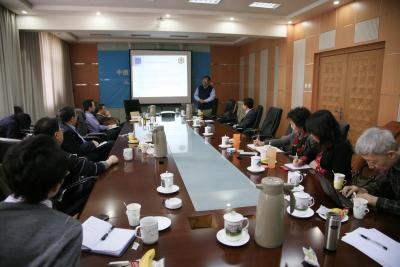On March 26, 2010, the Professional Committee of Labor Sociology of the Chinese Sociological Association and the School of Labor Relations and Human Resources of the China University of Labor Relations (CULR) invited Dr. Liu Jinyun, a researcher from the University of Michigan, to give an academic report at the CULR. The theme of the report was "Labor-Management Negotiation Committees in the United States and Their Attempts in China". Professor Feng Tongqing, President of the Labor Sociology Branch, and experts and scholars from the Institute of Sociology of the Chinese Academy of Social Sciences and China University of Political Science and Law attended the seminar. Associate Professor Qiao Jian, Director of the School of Labor Relations and Human Resources, chaired the seminar.
Dr. Liu Jinyun graduated from Beijing Economic College (now Capital University of Economics and Business) with a major in labor economics in 1982, and is a senior labor economist. He started with the emergence and evolution of labor law in the United States, elaborated on the methods of improving labor relations and preventing labor disputes within the enterprise as stipulated by the Joint Conference on Labor Relations, and focused on the introduction and practice of this project in China with examples from both China and the United States. Dr. Liu emphasized transforming the relationship between labor and management from confrontation to cooperation, striving for a win-win situation. He pointed out that for the labor disputes that have been growing rapidly year by year, it is necessary to focus on prevention, resolve them at the grassroots level, and try to resolve them through negotiation and mediation as much as possible, rather than resorting to arbitration or courts, so as to promote harmonious development of labor relations. After several years of practice in places such as Qingdao and Guangdong, the Joint Conference on Harmonious Labor Relations has begun to achieve certain results in pilot enterprises.
Dr. Liu Jinyun's report coverd an introduction and comparison of the labor relations systems in China and the United States, broadening the participants' horizons. His detailed explanation of the cases he participated in also sparked strong interest among the attendees, leading to in-depth exchanges and discussions with him.
(School of Labor Relations and Human Resources)

